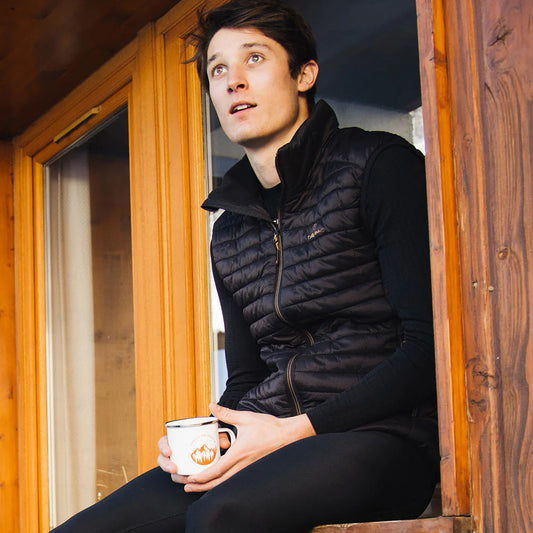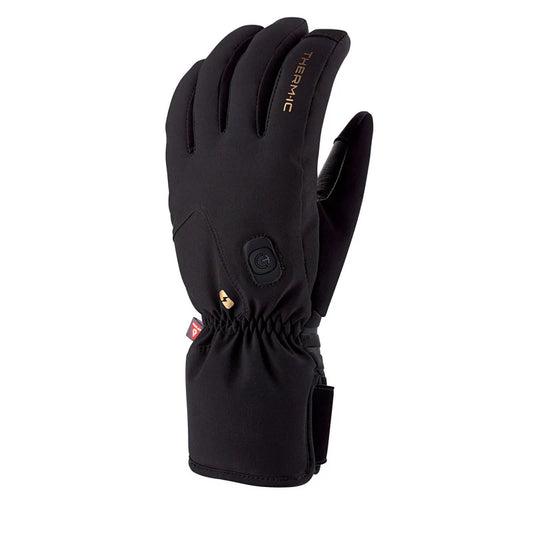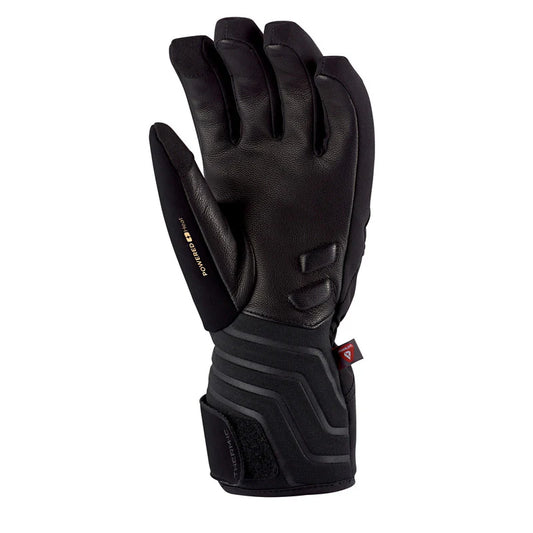Horseback riding is not the sport of a single season. Neither the rider nor the horse knows the concept of hibernation. Especially when you practice at a high level. Once autumn arrives and then winter sets in, despite Mother Nature's whims, you must continue to walk, train and spend time in the stables... The cold then becomes the rider's main enemy. A cold so painful that it almost discouraged Jessica Michel-Botton from pursuing her career. Indeed, inconvenienced by Raynaud's syndrome, the woman who has nearly 30 French dressage champion titles to her credit has already been so cold that, in some winters, the suffering may have disillusioned her with her passion. Until it instantly tries and adopts the heat and comfort solutions developed by Therm-ic.
I met with one of the French references in the discipline who gives us, at the end of a trot, her advice on horseback riding in winter. And how to no longer feel the cold when riding a horse!

THE INTERVIEW
HORSEBACK RIDING IS A SPORT THAT IS REALLY EXPOSED TO THE COLD?
Yes, really! Horseback riding is a sport which is done outdoors, regardless of the conditions. By definition, we are as exposed to heat in summer as we are to cold in winter. The horse is like an athlete. It has to train all year round. It can't stop because it's -10°C! However, our main problem is that there is very little specific equipment. Our equipment, including boots and gloves, varies very little between seasons. Or you have to be able to invest CHF1000 in a pair of padded boots... (and it's not efficient enough!)
HOW DOES THE COLD REALLY PENALIZE YOUR HIGH LEVEL PRACTICE?
For my part, I really fear winter, especially since I suffer from Raynaud's syndrome which multiplies the harmful effects of cold on my activity. As soon as you get cold, it becomes almost impossible to stay focused, motivated, effective in your training... Might as well go home and get warm!
WHAT DID THIS COLD-RELATED SUFFERING RESULT IN?
Raynaud's syndrome increases my sensitivity to cold, especially in the extremities. My feet and hands go numb very quickly, they turn white, blood no longer circulates. It's extremely painful. I have cried on horseback, in pain but also in despair. To the point of being almost disenchanted with my passion.
CAN THE FACT THAT THE RIDER IS COLD HAVE AN IMPACT ON THE HORSES?
Yes, of course! Horses instantly feel if you are stiff and tense from the cold. They then become aware that the situation is not normal, they worry and can react in a sudden and abnormal way. They get scared, develop an instinct to run away... It becomes dangerous. The risk of falling increases. Especially since in winter, horses are very reactive and fiery. They need to work hard to get warm. You’d better be alert and focused as soon as you get in the saddle.
THERMAL COMFORT IS THEREFORE A REAL SOURCE OF PLEASURE AND PERFORMANCE IN HORSEBACK RIDING?
Absolutely! Any rider who suffers from the cold will be less efficient and will have less enjoyment. Whether professional or amateur. The cold penalizes the professional since it takes away finesse and flexibility with their horse. The amateur sees his/her leisure transformed into an ordeal because (s)he knows that in ten minutes, because of the completely frozen steel stirrups, their feet will be frozen.
WHAT SOLUTIONS HAVE YOU FOUND TO AVOID GETTING COLD ON HORSEBACK?
I spent quite a lot of time trying to find alternatives before I discovered Therm-ic (smile). As I rarely ski, I was not familiar with heating solutions. I made my first purchase of the brand on the Internet in January 2017. Then, more than convinced, we became partners at the beginning of 2019. It clearly changed my life and revolutionized my activity. I'm much less afraid of the cold now!
WHICH THERM-IC PRODUCTS DO YOU USE THE MOST?
The heated insoles! Whether to train myself or teach others. I use them both to ride a horse and to spend my day standing in the riding arena, with my feet in contact with a very cold and wet sand. When riding, feet are a really sensitive area because they can remain still for a very long time, confined in fairly narrow boots, with high humidity. The heated insoles, by their thinness, practicality and autonomy, have really changed my life!
DO YOU USE PRODUCTS OTHER THAN HEATED INSOLES TO PROTECT YOURSELF FROM THE COLD?
The list is quite long since I get very cold quickly (Smile). Most riders are also teachers and in this activity, I use the heated jacket and heated gloves a lot. Finally, I have a really daily use, no matter the season, summer or winter, of shoe dryers! After each session, I put them in my boots to sanitize them. Because humidity is a scourge that heralds cold and therefore discomfort...
THE ADVICE
HEATED INSOLES
"They have transformed my apprehension of winter. They have three main advantages. First of all, they are so thin that they fit perfectly into the boot. They’re so comfortable that they make you forget they're there. Then, as I was afraid of being bothered by the wire, I find the small batteries very easy to hang on the outside of the boot. It is a real practical solution. Finally, the last element is the possibility of adjusting the intensity of the heat according to the conditions, thanks to my mobile phone, without having to take off my boots. This allows me to manage the battery life perfectly, for days that sometimes last almost ten hours...". Don't worry, the wire connecting the insole to the battery is thin and does not interfere with the boots.
SHOE DRYERS
"They are an ally that has become indispensable. I use them in summer as well as in winter because after a day at the riding school, my boots are necessarily made a little wet by my feet sweating in a very confined environment. They have sanitizing properties that allow me to leave for training the next day in a healthy and serene way!"
THE HEATED JACKET
"I use it more whilst teaching than when riding. What I really appreciate, beyond its comfort and sobriety, is the possibility, as for the insoles, to adjust the intensity of the heat according to my current needs!"
HEATED GLOVES
"Like the jacket, I use them more for teaching, when I have to spend a lot of time standing up, in the stable or in the riding area. To ride a horse, I prefer silk gloves that offer me a little more finesse and sensitivity in the way I hold my bridle. This in order to better understand my horse, better understand and feel the information it gives me!"














